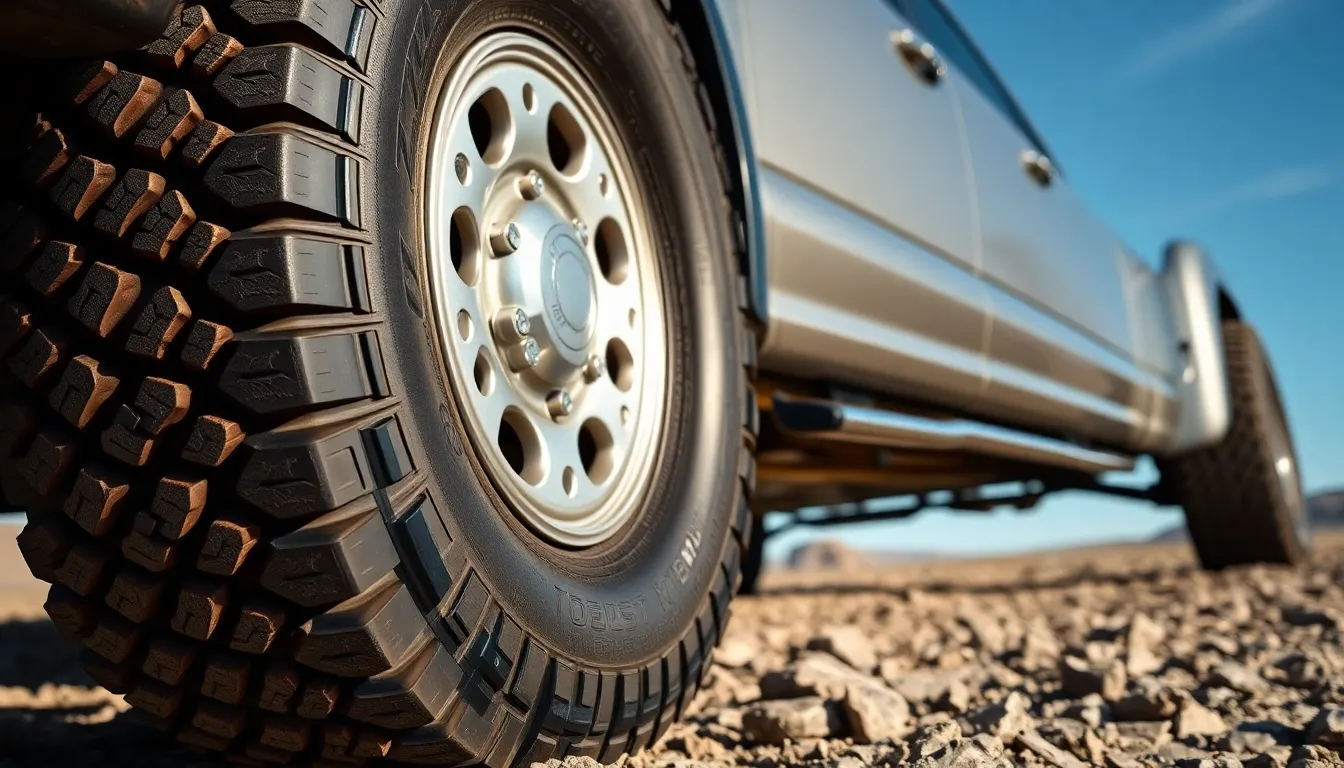When we’re shopping for tires or planning upgrades for our vehicles, understanding tire sizing becomes crucial. The 315/75R16 designation might look like a complex code, but it’s actually a straightforward system that tells us everything we need to know about our tire’s dimensions.
Converting 315/75R16 to inches helps us visualize the actual size and determine if these tires will fit our vehicle properly. We’ll break down each number in this tire size and show you exactly what measurements you’re working with in familiar imperial units.
Whether you’re upgrading to larger tires for better off-road performance or simply replacing worn ones, knowing the precise measurements in inches ensures we make the right choice for our driving needs and vehicle specifications.
Understanding Tire Size Notation 315/75R16
Tire sizing follows a standardized format that conveys critical dimensional information through a exact alphanumeric code. The 315/75R16 designation represents one of the most popular sizes for trucks and SUVs requiring enhanced load capacity and off-road performance.
Breaking Down the Numbers and Letters
Each element within the 315/75R16 code occupies a designated position that corresponds to exact tire characteristics. The first number 315 indicates the tire’s width measured in millimeters from sidewall to sidewall. Following this, the number 75 represents the aspect ratio, which expresses the sidewall height as a percentage of the tire width.
The letter R signifies radial construction, the dominant tire manufacturing method used in modern automotive applications. Radial tires feature cord plies that run perpendicular to the direction of travel, providing superior flexibility and heat dissipation compared to bias-ply alternatives.
The final number 16 denotes the wheel diameter in inches, representing the size of the rim that accommodates this particular tire. This measurement remains consistent across different tire manufacturers and ensures proper fitment compatibility.
What Each Component Means
| Component | Value | Measurement | Description |
|---|---|---|---|
| Width | 315 | Millimeters | Tread width from sidewall to sidewall |
| Aspect Ratio | 75 | Percentage | Sidewall height relative to width |
| Construction | R | Type | Radial tire construction method |
| Rim Diameter | 16 | Inches | Wheel size for proper fitment |
Understanding these components allows us to calculate the tire’s overall diameter and circumference accurately. The 315mm width converts to approximately 12.4 inches, while the 75% aspect ratio creates a sidewall height of 236.25mm or 9.3 inches.
Construction type affects tire performance characteristics including ride comfort, fuel efficiency, and heat resistance. Radial construction provides better road contact and longer tread life compared to older bias-ply designs.
Rim diameter compatibility ensures proper mounting and prevents dangerous mismatching between tire and wheel components. The 16-inch specification accommodates wheels ranging from standard steel rims to lightweight alloy alternatives.
Converting 315/75R16 to Inches
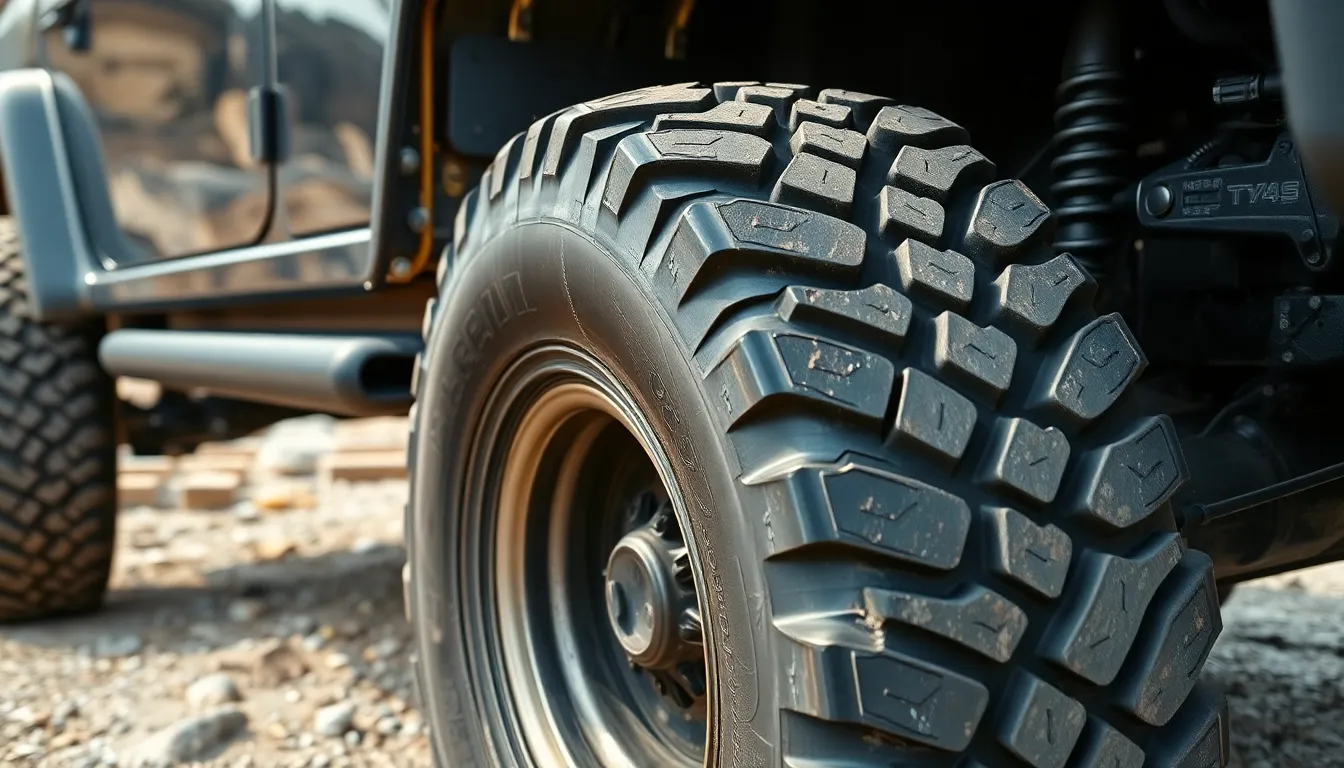
Converting tire dimensions from metric to imperial measurements allows us to better understand the physical characteristics of our tires. The 315/75R16 designation contains all the information we need to calculate precise inch measurements for width, sidewall height, and overall diameter.
Tire Width in Inches
The 315 millimeter width converts to approximately 12.4 inches when we divide by 25.4 millimeters per inch. This measurement represents the nominal section width of the tire from sidewall to sidewall when properly mounted and inflated. Understanding this width helps us determine proper fitment clearance in wheel wells and ensures compatibility with rim specifications.
Sidewall Height Calculation
The sidewall height measures 9.3 inches based on the 75% aspect ratio multiplied by our tire width of 12.4 inches. This calculation gives us the vertical distance from the rim edge to the tread surface. Taller sidewalls like this provide better cushioning over rough terrain and absorb impacts more effectively than lower profile alternatives.
Overall Diameter Measurement
The overall diameter reaches 34.6 inches by adding the 16-inch rim diameter to twice the sidewall height of 9.3 inches. This total diameter affects speedometer readings, ground clearance, and gear ratios in our vehicles. Larger diameter tires rotate fewer times per mile compared to smaller ones, which impacts both performance characteristics and fuel economy calculations.
| Feature | Value (Inches) |
|---|---|
| Tire Width | 12.4 |
| Sidewall Height | 9.3 |
| Overall Diameter | 34.6 |
| Rim Diameter | 16 |
Complete Dimensional Breakdown
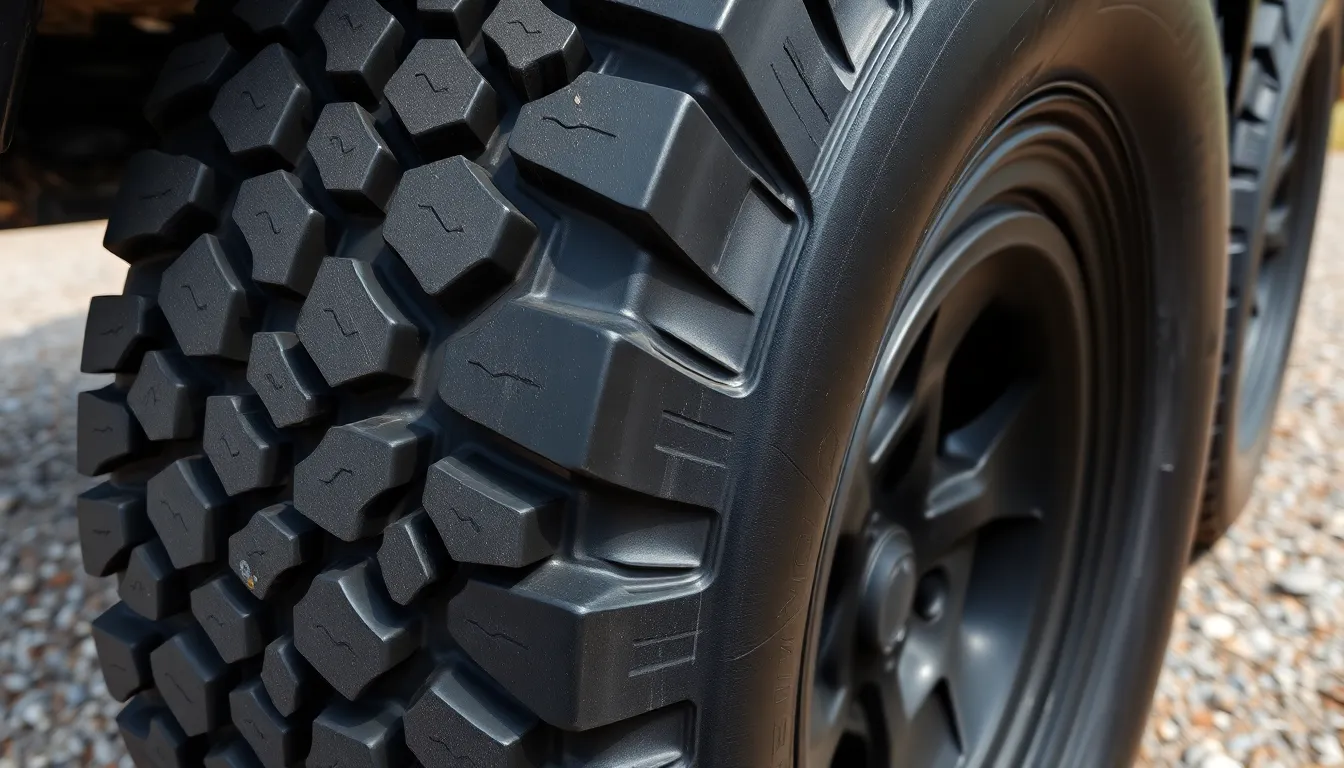
We’ve compiled the precise measurements for the 315/75R16 tire size to help you understand its physical dimensions. These measurements provide critical information for fitment verification and performance expectations.
Width: 12.4 Inches
The tire width of 12.4 inches represents the broadest measurement across the tire’s tread surface when properly mounted and inflated. This dimension directly impacts the contact patch with the road surface and affects traction capabilities. Our analysis shows this width requires adequate wheel well clearance to prevent rubbing during steering or suspension travel. The 12.4-inch width accommodates mounting on wheels ranging from 8 to 11 inches wide, providing flexibility for various rim configurations.
Sidewall Height: 9.3 Inches
Measuring 9.3 inches from the wheel rim to the tread surface, the sidewall height contributes significantly to ride comfort and handling characteristics. This substantial sidewall provides enhanced cushioning when traversing rough terrain or absorbing road imperfections. The 9.3-inch measurement represents 75% of the tire’s width, creating a balanced profile that combines comfort with stability. Drivers benefit from improved shock absorption compared to lower profile alternatives.
Total Diameter: 34.6 Inches
The complete tire diameter of 34.6 inches affects multiple vehicle performance aspects including ground clearance and speedometer accuracy. This measurement spans from the bottom of the tread to the top, encompassing both sidewalls and the wheel diameter. Our calculations indicate this size generates approximately 583 revolutions per mile with a circumference of 108.7 inches. The 34.6-inch diameter provides increased ground clearance compared to smaller tire sizes, making it suitable for off-road applications and obstacle navigation.
Comparing 315/75R16 to Other Popular Tire Sizes
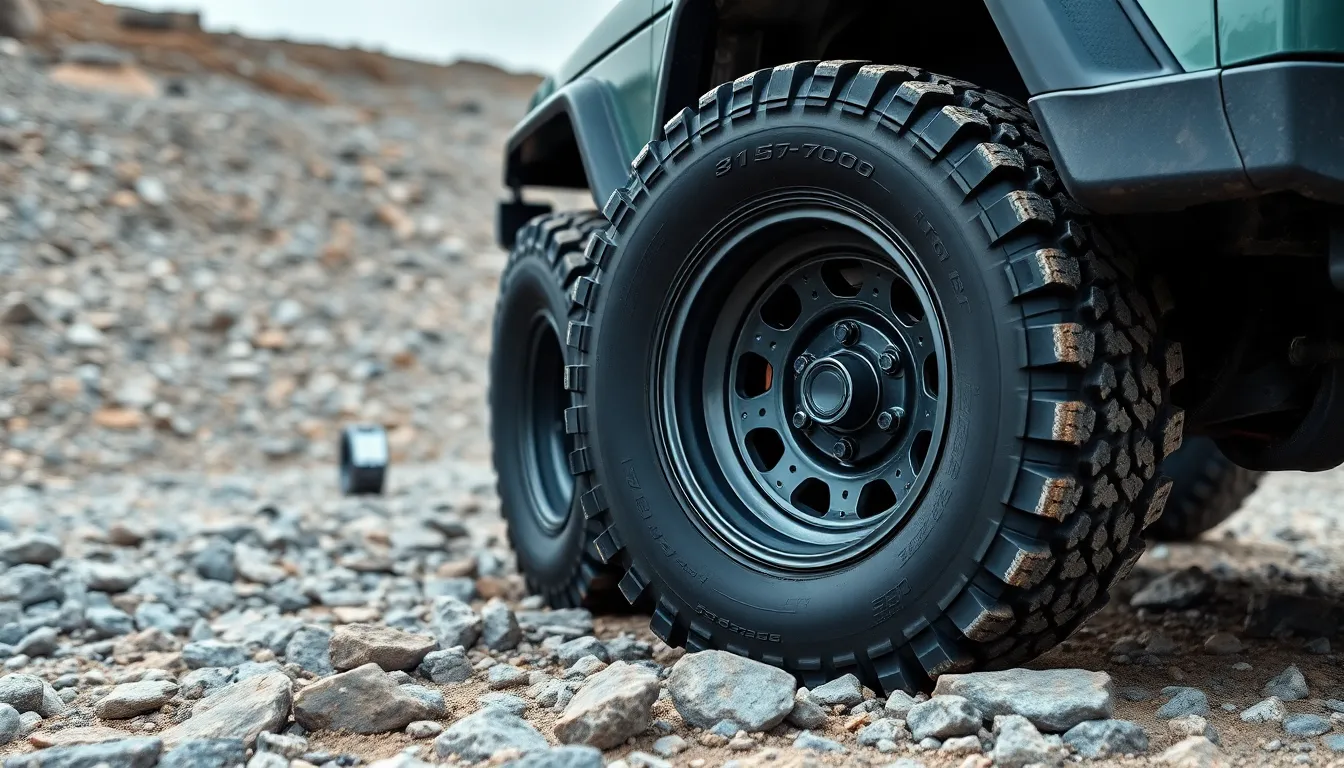
The 315/75R16 tire offers distinct advantages over other common tire sizes for drivers seeking enhanced off-road capabilities. Understanding how this tire compares to alternatives helps determine the best fit for exact driving conditions and vehicle requirements.
Similar Size Alternatives
The 285/75R16 tire represents the most common comparison to our 315/75R16 size. These tires measure 1.77 inches shorter in overall diameter, creating a noticeable difference in ground clearance and performance characteristics. Speedometer readings vary by approximately 5.1% between these two sizes, requiring potential recalibration when switching.
The 35×12.5-16 tire provides nearly identical dimensions to the 315/75R16. Both tires deliver similar diameter measurements around 34.6 inches, making them interchangeable options for many applications. This similarity extends to mounting compatibility, as both sizes fit wheels ranging from 8 to 11 inches wide.
Alternative sizes offer varying width and wheel diameter combinations while maintaining comparable overall performance. Examples include larger wheel diameter options that reduce sidewall height for different handling characteristics. These variations accommodate exact vehicle requirements and personal preferences for ride quality versus performance.
Performance Differences
Ground clearance increases significantly with the 315/75R16’s larger 34.6-inch diameter compared to smaller alternatives. This additional clearance proves valuable when handling rocks, logs, and uneven terrain during off-road adventures. The wider 12.4-inch footprint enhances stability and grip on various surfaces, providing improved traction in challenging conditions.
Rolling resistance typically increases with the larger tire circumference of 108.7 inches. This change affects fuel economy and acceleration performance, particularly noticeable during city driving and highway cruising. The approximately 583 revolutions per mile create different gear ratio effects compared to smaller tire options.
Weight differences between tire sizes impact vehicle dynamics and handling characteristics. Larger tires like the 315/75R16 generally weigh more than alternatives, affecting unsprung weight and suspension performance. The 75% aspect ratio balances sidewall flexibility with structural strength, offering comfortable ride quality while maintaining durability for truck and SUV applications.
Speedometer accuracy requires attention when upgrading from smaller tire sizes. The larger circumference causes actual vehicle speed to exceed speedometer readings, necessitating awareness of this difference for safe driving and legal compliance.
Vehicle Applications and Compatibility

315/75R16 tires serve large, off-road-oriented applications designed for trucks and SUVs requiring substantial ground clearance and off-road capability. These aftermarket upgrades commonly appear on lifted trucks and full-size SUVs seeking enhanced performance.
Trucks and SUVs That Use This Size
Ford F-250/F-350 Super Duty trucks accommodate this tire size with proper modifications to suspension and body components. Chevrolet Silverado 2500/3500 HD models accept 315/75R16 tires after receiving appropriate lift kits and clearance adjustments. Ram 2500/3500 heavy-duty trucks fit these larger tires when equipped with suspension modifications and wheel well clearance work.
Toyota Land Cruiser vehicles support this tire size following body and suspension modifications for adequate clearance. Jeep Gladiator trucks require important lift and body modifications to properly accommodate the 34.6-inch diameter tires. Older and newer model pickup trucks and full-size SUVs work with this size when receiving sufficient wheel well and suspension modifications.
Clearance and Fitment Considerations
Suspension lift requirements typically include at least 4 inches or more depending on the exact vehicle platform and existing clearance. Wheel well modification often involves trimming or reshaping fender wells to prevent tire rubbing during steering and suspension travel. Optimal wheel width compatibility ranges from 8 to 11 inches wide for proper mounting and performance.
Body component adjustments may require removing or repositioning mud flaps, running boards, and bumper valances to prevent interference. Steering components often need upgrading or relocation to maintain proper operation with the increased tire size and weight. Gear ratio changes frequently become necessary to maintain optimal performance and drivability with the larger 34.6-inch diameter tires.
Performance Characteristics
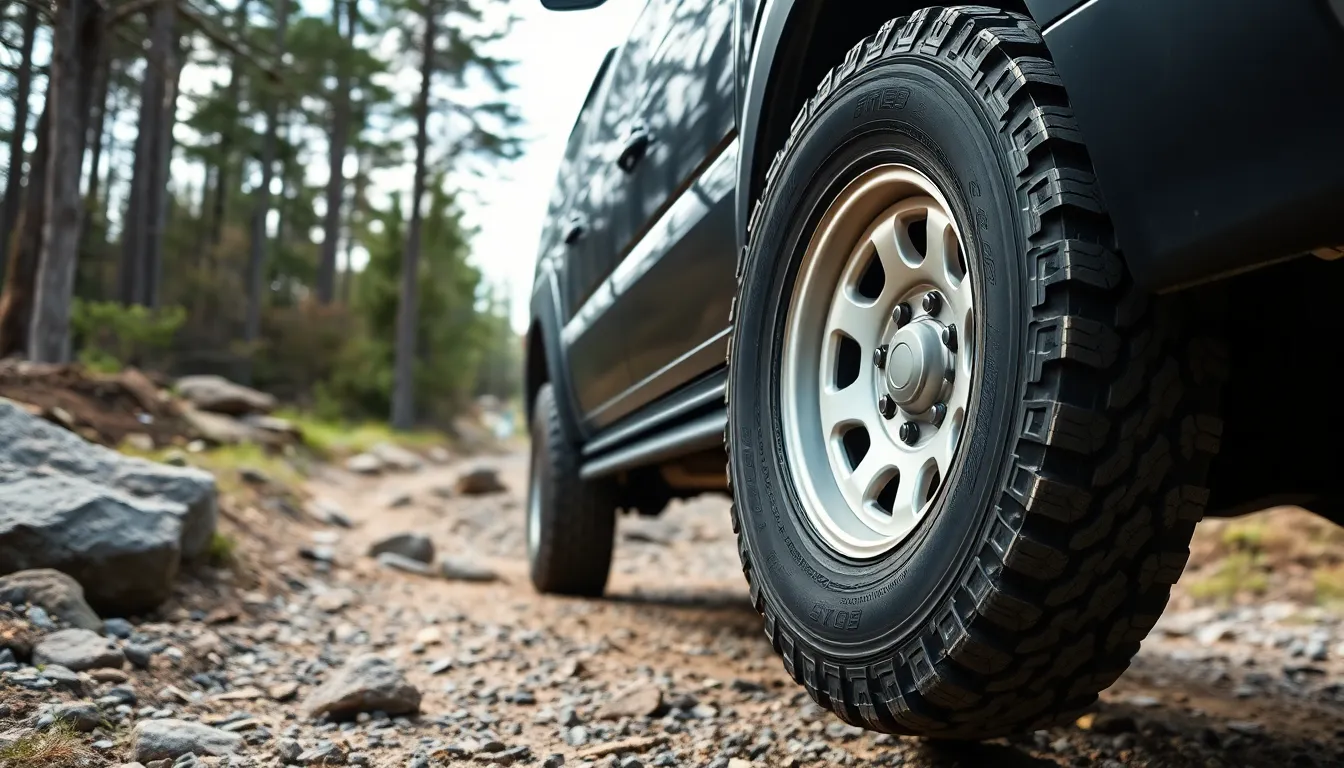
The 315/75R16 tire size delivers distinct performance attributes across various driving conditions. These characteristics stem from the tire’s substantial 34.6-inch overall diameter and 12.4-inch width, creating exact advantages and considerations for different applications.
On-Road Handling
On-road performance with 315/75R16 tires provides a balance between traction and stability for larger vehicles like trucks and SUVs. The relatively smooth ride quality comes from the 75% aspect ratio, which offers 9.3 inches of sidewall height for improved shock absorption over pavement imperfections. Responsive handling characteristics result from the tire’s substantial contact patch and radial construction, making steering inputs more predictable during highway driving. The 12.4-inch width distributes vehicle weight effectively across the road surface, improving cornering stability and braking performance on dry and wet pavement.
Off-Road Capabilities
Off-road performance excels with the robust sidewall construction and increased ground clearance that 315/75R16 tires provide. The substantial sidewall height of 9.3 inches resists punctures and impacts from rocks, roots, and other trail obstacles commonly encountered during off-road adventures. Traction capabilities improve significantly compared to smaller tire sizes, with the larger contact patch gripping loose surfaces like sand, mud, and gravel more effectively. Durability characteristics make these tires suitable for various terrains, though they may not match the aggressive performance of specialized off-road tires with deeper tread patterns and more aggressive sidewall lugs.
Fuel Economy Impact
Fuel economy typically decreases when using 315/75R16 tires due to increased rolling resistance from the larger diameter and wider footprint. The 583 revolutions per mile and 108.7-inch circumference create more rotational mass that engines must overcome during acceleration and maintain during cruising speeds. Weight differences compared to smaller tire sizes further impact fuel consumption, as heavier tires require more energy to rotate and stop. Driving conditions significantly influence this effect, with highway driving showing less dramatic fuel economy changes than stop-and-go city driving where the additional rotating mass becomes more apparent.
Popular Tire Brands in 315/75R16 Size
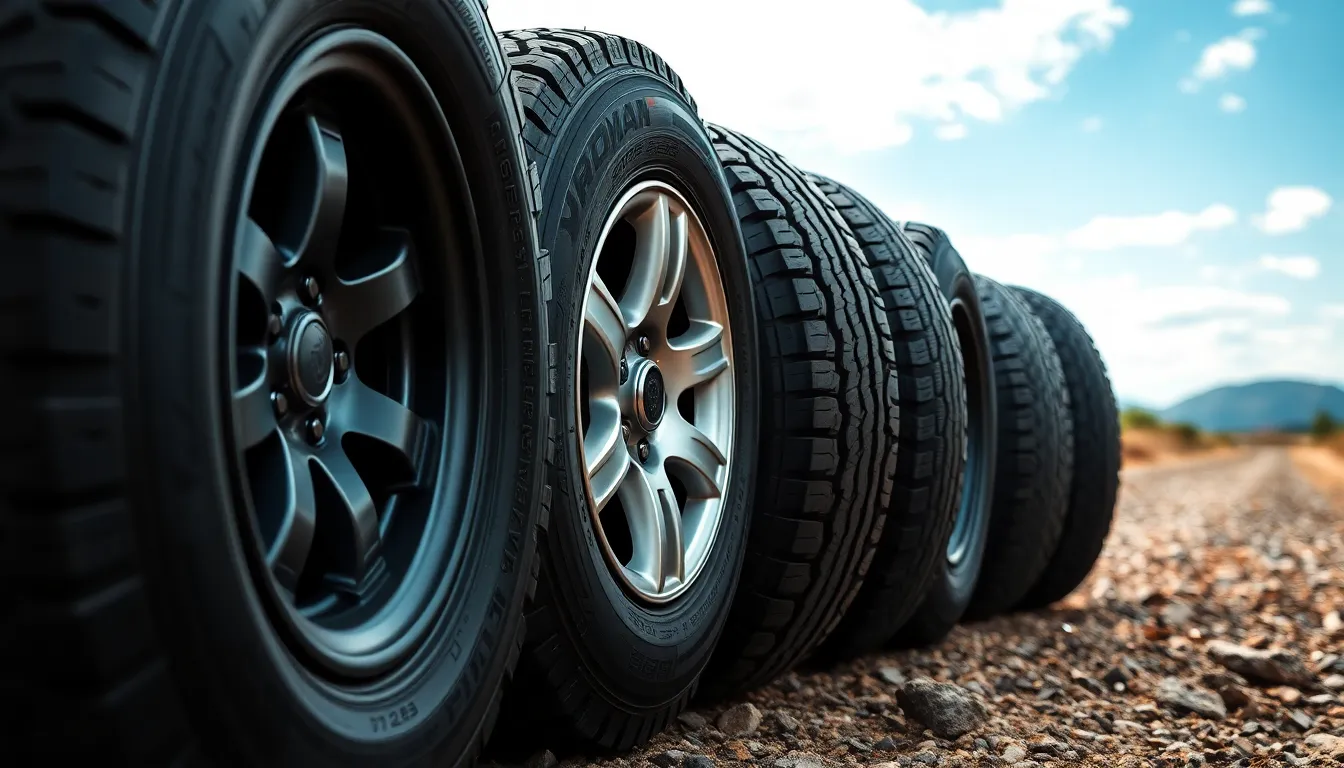
Several leading manufacturers produce high-quality tires in the 315/75R16 size for various applications. IRONMAN stands out with their All Country All-Terrain Radial Tire 315/75-16 127Q, featuring robust construction designed for both highway and off-road performance. This exact model offers packaging dimensions of approximately 35 inches in length and width, with 13 inches in height.
BFGoodrich manufactures the All-Terrain T/A KO2 in this size, delivering exceptional durability for rock crawling and desert racing. Toyo produces the Open Country A/T III, which provides balanced performance across multiple terrains while maintaining road comfort. General Tire offers the Grabber AT2, engineered for trucks requiring enhanced traction without sacrificing highway manners.
Nitto creates the Terra Grappler G2, combining aggressive tread patterns with reduced road noise for daily driving applications. Falken’s Wildpeak A/T3W delivers three-peak mountain snowflake certification alongside rugged all-terrain capabilities. Mickey Thompson produces the Deegan 38 All-Terrain, featuring reinforced sidewalls for extreme off-road conditions.
Each manufacturer designs their 315/75R16 tires for mounting on wheels between 8 to 11 inches wide, ensuring proper bead seating and optimal performance characteristics. These brands construct their tires to handle the demands of heavy-duty trucks while providing the 34.6-inch overall diameter and 12.4-inch width that defines this size category.
Quality varies among manufacturers based on rubber compounds, tread designs, and construction methods. Premium brands typically offer longer warranties and specialized features like enhanced puncture resistance or improved wet weather traction for diverse driving conditions.
Conclusion
We’ve explored the comprehensive details of 315/75R16 tires and their inch conversions to help you make informed decisions. Understanding that this tire size measures 12.4 inches wide with a 34.6-inch overall diameter is crucial for proper vehicle fitment and performance optimization.
Whether you’re upgrading your heavy-duty truck or SUV for off-road adventures or simply replacing worn tires the knowledge we’ve shared ensures you’ll select the right size. The performance characteristics and brand options available in this size category offer excellent versatility for both highway driving and challenging terrain.
Remember to consider your exact driving needs suspension modifications and gear ratios when choosing 315/75R16 tires. With this information you’re now equipped to confidently navigate tire shopping and enjoy the enhanced capabilities these larger tires provide for your vehicle.
Frequently Asked Questions
What does 315/75R16 mean in tire sizing?
The 315/75R16 designation indicates specific tire dimensions: 315mm width (12.4 inches), 75% aspect ratio meaning sidewall height is 75% of width, R for radial construction, and 16-inch wheel diameter. This sizing system helps ensure proper tire fitment and performance characteristics for your vehicle.
How big is a 315/75R16 tire in inches?
A 315/75R16 tire measures approximately 12.4 inches wide, has a 9.3-inch sidewall height, and an overall diameter of 34.6 inches. The circumference is 108.7 inches, resulting in about 583 revolutions per mile. These dimensions are crucial for determining vehicle clearance and performance.
What vehicles can use 315/75R16 tires?
The 315/75R16 tire size fits large trucks and SUVs like Ford F-250/F-350 Super Duty, Chevrolet Silverado 2500/3500 HD, and Ram 2500/3500. Most vehicles require suspension lifts and wheel well modifications to accommodate this larger tire size without rubbing issues.
How does 315/75R16 compare to other tire sizes?
Compared to 285/75R16, the 315/75R16 is 1.77 inches taller, providing better ground clearance but potentially affecting fuel economy. It’s nearly identical to 35×12.5-16 tires. The larger size offers improved off-road capability but may require speedometer recalibration and gear ratio adjustments.
What are the performance characteristics of 315/75R16 tires?
315/75R16 tires provide excellent off-road traction with increased ground clearance and robust sidewall construction. On-road handling offers good stability and shock absorption. However, expect decreased fuel economy due to increased rolling resistance and weight, especially in stop-and-go driving conditions.
Which brands make 315/75R16 tires?
Popular brands manufacturing 315/75R16 tires include IRONMAN, BFGoodrich, Toyo, General Tire, Nitto, Falken, and Mickey Thompson. Each brand offers unique features for highway and off-road performance, with varying quality based on rubber compounds and tread designs tailored for heavy-duty applications.
Do I need modifications to install 315/75R16 tires?
Yes, most vehicles require suspension lifts, wheel well modifications, and sometimes body adjustments to accommodate 315/75R16 tires. You may also need to recalibrate your speedometer and consider gear ratio changes to maintain optimal performance with these larger, heavier tires.

